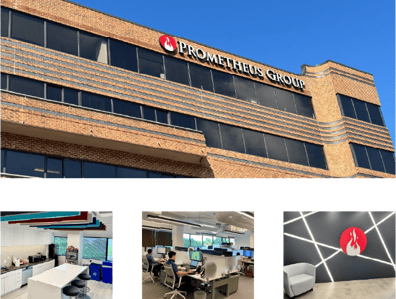The advent of Internet-of-Things (IoT) technologies has opened new horizons for enterprise asset management, enabling enterprises to acquire and process data about their assets and MRO operations in a timely fashion.
In addition, the integration of BigData technologies provides the means for maintaining, processing and fully leveraging large amounts of MRO (Maintenance, repair, and operations) related data. This includes data for individual assets and knowledge associated with the proper prioritization of maintenance operations and the assessment of relevant risks.
Nowadays, there are readily available products (such as IBM® Maximo® used in conjunction with IBM Watson™ IoT Platform) that can utilize IoT and BigData to help optimize maintenance activities and maximize asset value.
Nevertheless, the availability of rich datasets and associated knowledge about assets and operations creates new challenges in the way maintenance professionals can assess, understand, analyze and ultimate exploit this wealth of data. This is because the resulting insights are more complex and richer than ever before, especially when dealing with sophisticated assets and operations such as the manufacturing of composite products.
Scope and Merits of MRO Visualization
In this context, maintenance staff could greatly benefit from ergonomic, user-friendly visualization of the MRO datasets.
The datasets include:
- Sensor data generated on the shop floor;
- Data logs from machines, tools and production systems;
- Data about production planning and scheduling;
- Information about operators and their involvement in the production or MRO processes;
- Information derived from data analytics algorithms such as anticipated failures and malfunctions;
- Maintenance schedules.
These datasets are either collected from an IoT platform or produced following the execution of data analytics algorithms. In all cases, they end up being in a cloud computing infrastructure.
A visualization solution can then access the datasets and use them in order to present the production status and the status of individual assets.
This includes:
- notifications
- warnings
- alarms
- numbers of units
- hourly rates
- availability information
- Operational Equipment Efficiency (OEE) indicators for particular machines, orders and items information
- numbers of units produced
- last shifts, stop and failure causes
- other detailed MRO information.
The presented information could include both current status values and future predictions about the anticipated status of assets and operations.
Employees should be able to view information about the whole production facility or infrastructure, including all assets and their interrelationships. They should also have the opportunity to drill-down in every data asset in order to view historical information, as well as information associated with root-cause analysis.
Overall, for each asset and the events associated with it, W4 contextual information should be visualized (i.e. what, where, when, why & how).
The visualization of the MRO and asset management information can be projected on multiple devices as part of a multi-modal, multi-channel solution. In addition to computer screens, the information can be displayed on large TV screens residing within the production floor.
Maintenance engineers should be able to access different views of the MRO information on their mobile phones and tablets. While mobile devices host more limited visualizations, employees can still use them to access all aspects of the maintenance context with appropriate navigation features.
With such visualization functionalities at hand,
- Maintenance staff can greatly improve their visibility of assets and production facilities, which serves as a basis for increasing their productivity and motivation.
- Visualization facilitates employees in gaining a 360-degree view of asset status, including their projected maintenance needs. In this way, they can better audit and analyze inefficiencies, and drill down in the root causes of defects.
- Through an ergonomic and user-friendly visualization, they improve their ability to evaluate the effects of cost reduction, along with their ability to accelerate repair processes.
- MRO data & information can also be shared with relevant stakeholders, including customers and other production facilities. Likewise, visualization information could be shared as well. This greatly improves collaboration across different facilities and stakeholders.
The scope of this collaboration may not only include comparing the operations of different facilities to identify optimal methods, but also to jointly review and execute production processes.
This reduces human effort in production processes, while at the same time improving the management of human resources. It also improves collaboration between equipment vendors and maintenance service providers as part of maintenance activities (e.g., repairing machines or tools).
The Human Factor
Human operators and employees are the primary beneficiaries of a successful visualization project. Their benefits are manifold, including:
- Reduced effort as a matter of improved efficiencies and increased up-time of assets and operations.
- Higher employee satisfaction because of faster access faster detailed information about their tasks, whenever and wherever they need it.
- A significant boost in meeting or even exceeding production targets, through more efficient data collection, root-cause analysis and execution of appropriate countermeasures.
- Instant support in the maintenance process (including remote support from machine vendors), especially with human-in-the-loop processes.
A key prerequisite for realizing these benefits is employees accepting the visualization solution, which can ensure that they will actually use it and actively engage with it.
Therefore, the ergonomics and the ease of use of the solution are probably the top critical success factors of any visualization project. Solution providers must, therefore, work closely with key users in order to adequately address the human factor.
Some guidelines towards an ergonomic and user-friendly visualization environment follow:
- Visual Representations: Assets and MRO operations should be visualized using appropriate colors, symbols, number and images. The representation of various indicators should be large and easily visible.
- Customization: Plant operators should be offered options to customize the visualization in terms of the aesthetics of the visual presentations, as well as in terms of the selection of information (e.g., indicators, statuses) that the operator would like to be able to see.
- Human-centered design: A human-centered design approach to implementing the visualization project should be adopted, including the active engagement of end-users in the implementation process. The implementation methodology should, therefore, include observational studies, focus groups or even co-creation sessions with the participation of both the vendor and end-users.
Revolutionizing Visualization: Augmented reality
While projecting information on TV screens and mobile phones can greatly help plant employees with MRO tasks, much more ergonomic and “realistic” visualizations are realized based on Augmented Reality (AR).
AR enables the integration of realistic digital experiences produced by cameras and smart devices (e.g., helmets, glasses) within the physical surroundings of the plant. It is no longer a future vision, but rather a technology that has been gradually moving from laboratories to the end user.
For example, Inglobe Technologies provides a platform that supports field technicians with paperless Augmented Reality instructions in real time using mobile devices and smart glasses. Similarly, the German start-up Oculavis offers an Augmented Reality solution that improves the quality and efficiency of manufacturing processes through the provision of animated step-by-step instructions on tablets and smart glasses. AR boosts the development of highly ergonomic visualizations of the plant, through integrating realistic data-driven cyber-representations over machines, tools and other assets of the plant.
These cyber-representations facilitate remote training and support of plant workers on the maintenance processes, by experts of the machine or tool vendor.
In a typical AR scenario for MRO, plant workers and maintenance engineers can use smart glasses to view an AR representation of the factory, select the parts that need maintenance and subsequently receive repair instructions from the part or component vendor to complete the maintenance task.
In this context, the worker sees a cyber-representation of the expert performing the maintenance prior to executing the maintenance task himself/herself. This saves time and money, for both the plant operator and the machine/component vendor of the machine or component under maintenance.
On the whole, plant operators, workers and engineers benefit from investments in ergonomic human-centered visualizations of their IoT and BigData asset management systems.
The benefits are not only economic, but can also directly reflect on employee satisfaction. Furthermore, the future of visualization, including AR technology is likely to open new horizons in both the efficiency and the economics of MRO processes.
Plant operators and maintenance professionals cannot afford to ignore the merits of visualization. It’s now time to consider it.


-1-1.png?length=360&name=5ef4eed86e9bca7066cf6393_Thumbnail%20-%20IIoT%20In%20Maintenance%20And%20The%20Rise%20of%20Digital%20Twins%20(1)-1-1.png)
